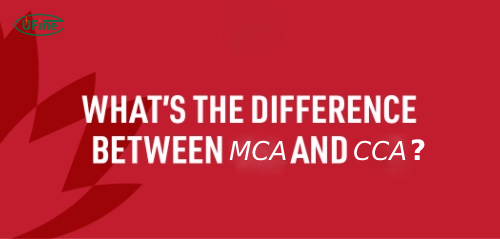Have you ever wondered about the difference between MCA and CCA on batteries? Understanding these terms can help you pick the correct battery for your needs. Let’s explore what CCA and MCA mean and how they differ. By the end, you’ll have a clearer idea of which battery suits your requirements best. Let’s dive in!
Quick Answer: MCA (Marine Cranking Amps) measures a battery’s ability to start marine engines at 32°F, while CCA (Cold Cranking Amps) measures a battery’s ability to start vehicle engines at 0°F. The main difference lies in temperature and application: MCA vs CCA ratings serve marine vs cold‑weather automotive starts respectively.
Part 1. What does MCA mean on a battery?
What does MCA mean on a battery? – MCA (Marine Cranking Amps) indicates the number of amps a battery can deliver for 30 seconds at 32°F (0°C). It’s critical for battery MCA meaning when selecting marine batteries capable of reliable starts in saltwater environments.
Role in Starting Marine Engines:
In marine environments, starting an engine can be more challenging due to factors like moisture, temperature variations, and the corrosive nature of saltwater. MCA comes into play here by providing the necessary power to turn the engine over and get it running smoothly. This is crucial for ensuring reliable performance, especially during critical situations like emergencies or navigating rough waters.
How MCA is Measured:
MCA is typically measured by applying a load to the battery at a specific temperature, usually around 32°F (0°C), for a set duration while monitoring the voltage drop. The higher the MCA rating, the better the battery can start the engine under challenging conditions. It’s important to note that MCA values may vary depending on the battery manufacturer and the specific model.
Significance of Marine Batteries:
MCA is a vital metric for marine batteries when selecting the correct battery for your vessel. Since marine engines often require a burst of power to start, having a battery with a sufficient MCA rating ensures reliable engine ignition, even in adverse conditions. Choosing a battery with an appropriate MCA rating can prevent issues like sluggish starts, stalling, or complete engine failure, which can be dangerous and inconvenient while on the water.
Part 2. What does CCA mean on a battery?
What does CCA mean on a battery? – CCA (Cold Cranking Amps) refers to the amps a battery can deliver for 30 seconds at 0°F (-18°C) while maintaining at least 7.2 V. Understanding the CCA battery meaning is key for vehicles in cold climates to ensure dependable engine starts.
Role in Starting Vehicles, Especially in Cold Weather:
Starting a vehicle in cold weather can be challenging due to the increased engine resistance and the battery’s reduced effectiveness. CCA provides the necessary power to crank the engine and initiate combustion. A higher CCA rating ensures the battery can reliably deliver enough power to start the engine, even in freezing temperatures.
How CCA is Measured:
A standardized test determines CCA by discharging the battery at the specified temperature and measuring the voltage drop. The higher the CCA rating, the better the battery can deliver power in cold conditions. It’s noteworthy that CCA values may vary depending on the battery’s size, construction, and manufacturer.
Relevance for Automotive Batteries:
For automotive batteries, CCA is a critical factor to consider, especially for drivers living in regions with cold climates. A battery with a sufficient CCA rating ensures that the vehicle starts promptly, even on frosty mornings when engine strain is at its peak. Choosing a battery with an appropriate CCA rating can prevent issues like slow cranking, stalling, or failure to start, which can be inconvenient and even dangerous, especially in emergencies.
Part 3. MCA vs CCA: What’s the difference?
- Measurement Units: MCA (Marine Cranking Amps) and CCA (Cold Cranking Amps) are used to measure a battery’s starting power but differ in their applications.
- Purpose of CCA: CCA explicitly measures a battery’s ability to start an engine in cold conditions, typically at 0°F (-18°C), within a specific time frame while maintaining a minimum voltage level.
- Purpose of MCA: MCA, on the other hand, is tailored for marine applications, measuring a battery’s ability to start marine engines under normal temperature conditions, usually around 32°F (0°C).
| Feature | MCA (Marine Cranking Amps) | CCA (Cold Cranking Amps) |
|---|---|---|
| Test Temperature | 32°F (0°C) | 0°F (-18°C) |
| Typical Application | Marine engines | Automotive engines |
| Measurement Duration | 30 seconds | 30 seconds |
| Key Benefit | Reliable starts on boats | Reliable starts in freezing weather |
Part 4. MCA and CCA application differences
- Starting Marine Engines: MCA is critical for starting marine engines, especially in environments where moisture, temperature fluctuations, and saltwater corrosion pose challenges. It ensures the battery can deliver the necessary power to crank the engine and initiate combustion, even in harsh marine conditions.
- Starting Vehicle Engines: In contrast, CCA is essential for beginning vehicle engines, particularly in cold climates. It determines the battery’s ability to provide sufficient power to start the engine when temperatures drop, preventing issues like slow cranking or failure to start in freezing conditions.
- Specific Conditions: Manufacturers tailor MCA for marine environments, where factors like saltwater exposure and humidity demand robust engine starting power. On the other hand, CCA is crucial for vehicles operating in cold climates, ensuring reliable engine starts even in sub-zero temperatures.
Part 5. Choosing the correct battery based on MCA and CCA
Identify Your Requirements:
- Determine the primary application for the battery. Are you looking for a battery for your vehicle or marine use? Knowing this will help you focus on the relevant specifications.
Consider Environmental Conditions:
- Assess the typical environmental conditions in which the battery will operate.
- If you live in a cold climate, prioritize CCA for vehicle batteries.
- For marine applications, consider MCA, especially if you’ll be navigating in saltwater or harsh marine environments.
Check Manufacturer Recommendations:
- Review the manufacturer’s recommendations for your vehicle or marine vessel. They often specify the minimum CCA or MCA rating required for optimal performance. Adhering to these recommendations can ensure compatibility and reliability.
Compare Ratings:
- Compare the MCA and CCA ratings of different batteries within your chosen category. Opt for higher-rated batteries, which indicate better starting power and performance under challenging conditions.
Consider Battery Type and Size:
- Determine whether you need a traditional lead-acid battery or if a newer technology like AGM (Absorbent Glass Mat) or lithium-ion would better suit your needs. Additionally, ensure that the battery size fits your vehicle or marine vessel’s specifications.
Budget and Warranty:
- Take into account your budget and the warranty offered by the battery manufacturer. While it’s tempting to opt for the cheapest option, investing in a higher-quality battery with a more extended warranty can save you money in the long run by reducing the risk of premature failure.
Part 6. FAQs about CCA battery and MCA battery
-
Is MCA the same as CCA?
MCA (Marine Cranking Amps) and CCA (Cold Cranking Amps) are different metrics. While both measure a battery’s ability to start an engine, MCA is specific to marine applications. In contrast, manufacturers tailor CCA for vehicles, especially in cold weather conditions. -
What does 750 MCA mean on a battery?
A battery rating of 750 MCA can deliver 750 amps of cranking power for a marine engine under normal temperature conditions. -
What is a lousy battery CCA?
A bad battery CCA refers to a low Cold Cranking Amps rating, indicating that the battery may struggle to start the engine, especially in cold weather conditions. -
Can you have too many cold cranking amps?
No, having too many Cold Cranking Amps is not a problem. It’s better to have more CCA than less, as it ensures the battery can provide sufficient power to start the engine, particularly in cold temperatures.
Related Tags:
More Articles

Stick Up Cam Battery Life: What to Expect and How to Improve It
How long does Stick Up Cam battery last? Learn about battery types, charge time, tips to extend battery life, and how to replace it—simple and easy to follow.
Best Security Camera Batteries: Complete Buying Guide
Find the best security camera battery for your needs. Learn about types, lifespan, charging tips, and how to avoid common battery problems.
ICR18650 Battery Explained: Chemistry, Use Cases, and Limitations
The ICR18650 battery is widely used in electronics. Learn its chemistry, uses, pros, and cons to see if it's right for your device or project.
A Detailed Exploration of Wireless Keyboard Battery
Learn how to choose, maintain, and troubleshoot wireless keyboard batteries. Discover why lithium batteries are the best choice for long-lasting performance.
Best Rechargeable Batteries for Solar Lights: Lithium vs NiMH vs NiCd Compared
Compare lithium-ion, NiMH, and NiCd batteries to find the best rechargeable option for solar lights based on performance, cost, and lifespan.




